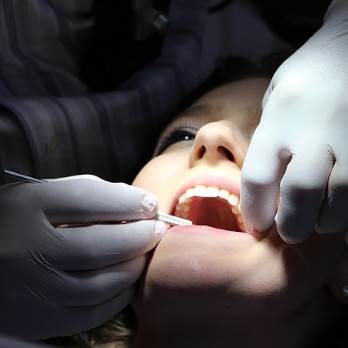A New Approach to Dental Implants: Screwless Options You Might Consider
Traditional dental implants have long relied on screw-based systems to secure replacement teeth, but innovative screwless alternatives are changing how dentists approach tooth replacement. These newer methods offer different attachment mechanisms that may provide advantages for certain patients, including potentially less invasive procedures and improved comfort during treatment.

What Are Screwless Dental Implants?
Screwless dental implants represent a category of tooth replacement systems that don’t rely on traditional screw mechanisms to secure the implant crown to the underlying post. Instead of using a screw that threads through the crown into the implant body, these systems employ alternative retention methods such as cement bonding, friction-fit connections, or specialized locking mechanisms. The implant post itself may still be threaded into the jawbone, but the crown attachment differs significantly from conventional approaches.
These systems typically consist of the same basic components as traditional implants: a titanium post that integrates with the jawbone, an abutment that connects to the post, and a crown that serves as the visible tooth replacement. The key difference lies in how these components connect, particularly the crown-to-abutment interface.
How Do Screwless Dental Implants Work?
The functioning of screwless dental implants depends on the specific retention mechanism employed. Cement-retained systems use dental cement to bond the crown permanently to the abutment, creating a strong connection without requiring access holes for screws. This approach mirrors how traditional dental crowns attach to natural teeth.
Friction-fit or press-fit systems rely on precisely engineered tolerances between components. The crown slides onto the abutment with a tight fit that creates sufficient retention through mechanical interference. Some designs incorporate small clips, springs, or locking tabs that engage when the crown is properly seated.
The implant post integration process remains similar to traditional implants, requiring osseointegration where the titanium fuses with surrounding bone tissue over several months. Once this healing phase completes, the screwless crown attachment system provides the final restoration.
Why More Patients Are Considering Screwless Implants
Several factors contribute to growing interest in screwless implant options. Many patients appreciate the absence of access holes in their crowns, which are necessary in screw-retained systems and must be filled with composite material. This can result in smoother crown surfaces and potentially better aesthetics, particularly for front teeth where appearance matters most.
The installation process for screwless crowns often feels more straightforward to patients, as it typically involves cementing or pressing the crown into place rather than the tightening procedures associated with screws. Some patients report feeling more comfortable with this approach, though individual experiences vary significantly.
Maintenance considerations also influence patient preferences. While screw-retained crowns can be removed for cleaning or repairs, some patients prefer the permanent nature of cemented crowns, viewing them as more similar to traditional dental work they understand.
Could Screwless Implants Be Right for You?
Determining candidacy for screwless implants requires professional evaluation of multiple factors. Your jaw bone density, gum health, and the location of the missing tooth all influence which implant system works best. Front teeth locations often benefit from the aesthetic advantages of screwless systems, while back teeth may require the retrievability that screw-retained options provide.
Existing dental work, bite patterns, and oral hygiene habits also factor into treatment planning. Patients with excellent oral hygiene may be good candidates for cement-retained systems, while those requiring frequent maintenance might benefit from removable options.
Your dentist will assess these factors alongside your personal preferences, budget considerations, and long-term oral health goals. Some patients may be candidates for either approach, allowing personal preference to guide the final decision.
What’s the Cost of Screwless Dental Implants?
| Provider Type | Service | Cost Estimation |
|---|---|---|
| General Dentist | Single screwless implant | $3,000 - $4,500 |
| Oral Surgeon | Single screwless implant | $3,500 - $5,500 |
| Periodontist | Single screwless implant | $4,000 - $6,000 |
| Prosthodontist | Single screwless implant | $4,500 - $7,000 |
Cost factors for screwless dental implants generally align with traditional implant pricing, though specific components may vary in price. The implant post, surgical placement, and crown fabrication represent the major cost components, typically ranging from $3,000 to $7,000 per tooth depending on your location and provider qualifications.
Additional procedures like bone grafting, sinus lifts, or extractions increase overall costs. Geographic location significantly impacts pricing, with urban areas typically commanding higher fees than rural regions. Insurance coverage varies widely, with some plans covering portions of implant treatment while others exclude it entirely.
Prices, rates, or cost estimates mentioned in this article are based on the latest available information but may change over time. Independent research is advised before making financial decisions.
The choice between screwless and traditional dental implants involves weighing multiple factors including aesthetics, functionality, maintenance requirements, and cost considerations. While screwless options offer certain advantages like improved crown appearance and simplified installation procedures, they may not suit every clinical situation. Consulting with qualified dental professionals helps ensure you receive appropriate treatment recommendations based on your specific needs and circumstances.
This article is for informational purposes only and should not be considered medical advice. Please consult a qualified healthcare professional for personalized guidance and treatment.




